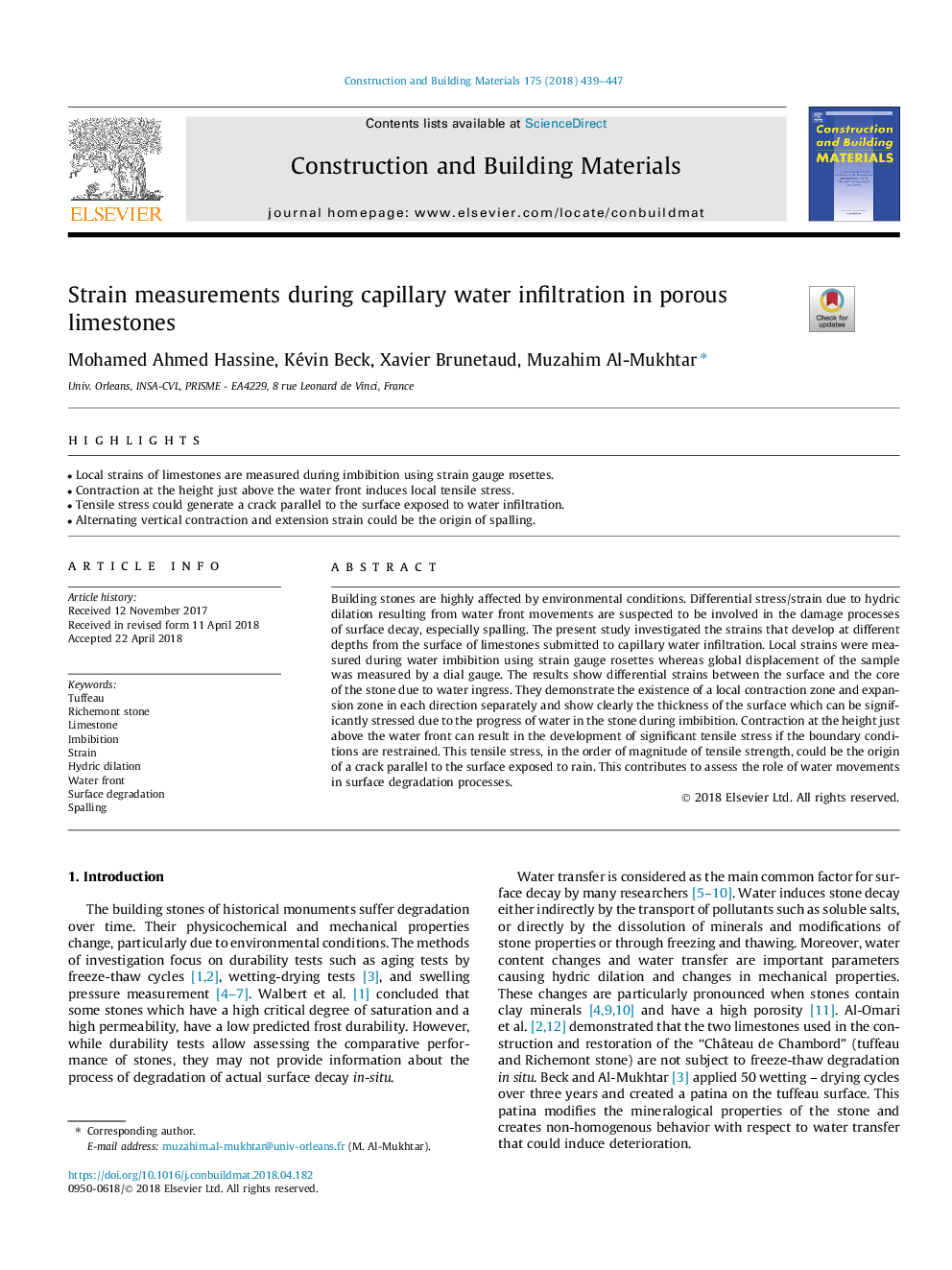| Article ID | Journal | Published Year | Pages | File Type |
|---|---|---|---|---|
| 6713533 | Construction and Building Materials | 2018 | 9 Pages |
Abstract
Building stones are highly affected by environmental conditions. Differential stress/strain due to hydric dilation resulting from water front movements are suspected to be involved in the damage processes of surface decay, especially spalling. The present study investigated the strains that develop at different depths from the surface of limestones submitted to capillary water infiltration. Local strains were measured during water imbibition using strain gauge rosettes whereas global displacement of the sample was measured by a dial gauge. The results show differential strains between the surface and the core of the stone due to water ingress. They demonstrate the existence of a local contraction zone and expansion zone in each direction separately and show clearly the thickness of the surface which can be significantly stressed due to the progress of water in the stone during imbibition. Contraction at the height just above the water front can result in the development of significant tensile stress if the boundary conditions are restrained. This tensile stress, in the order of magnitude of tensile strength, could be the origin of a crack parallel to the surface exposed to rain. This contributes to assess the role of water movements in surface degradation processes.
Related Topics
Physical Sciences and Engineering
Engineering
Civil and Structural Engineering
Authors
Mohamed Ahmed Hassine, Kévin Beck, Xavier Brunetaud, Muzahim Al-Mukhtar,
